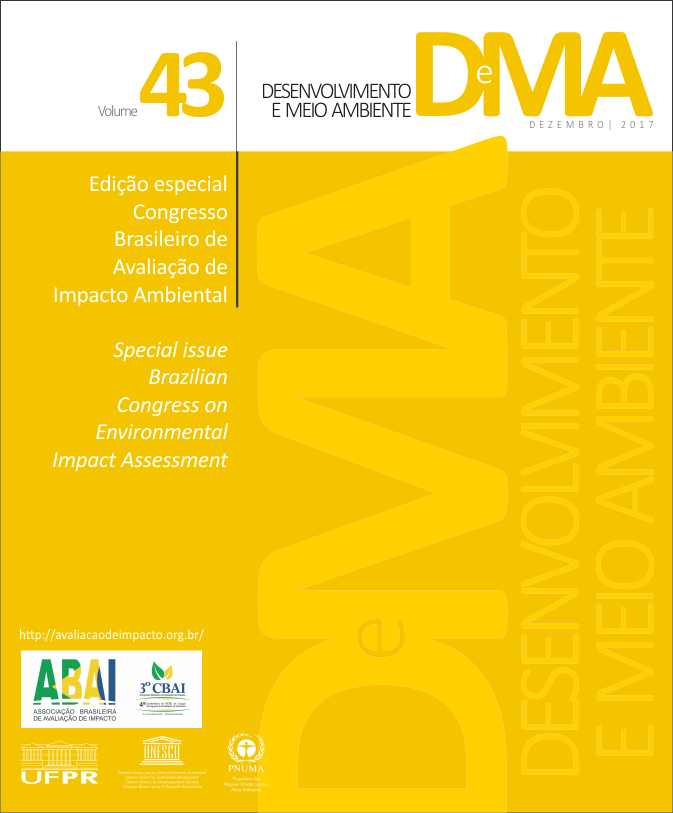Inclusão dos serviços ecossistêmicos em estudos de impacto ambiental: evidência empírica no estado de São Paulo
DOI:
https://doi.org/10.5380/dma.v43i0.54163Palavras-chave:
estudo de impacto ambiental, serviços ecossistêmicos, serviços ambientais, São Paulo, BrasilResumo
Diante do cenário recente de uso insustentável e degradação dos serviços ecossistêmicos (SEs), a Avaliação de Impacto Ambiental (AIA), em razão de seu caráter preventivo, tem o potencial de introduzir SEs na tomada de decisão. Todavia, poucos estudos exploraram essa vinculação. Assim, o presente trabalho buscou avaliar a inclusão do conceito de serviços ecossistêmicos no processo de AIA, por meio da análise de Estudos de Impacto Ambiental (EIAs) no estado de São Paulo. Para isso, foram selecionados 110 EIAs entre 2006 e 2014, nos quais foram feitas buscas por palavras-chave relativas aos SEs. Os EIAs enquadrados foram submetidos a uma análise sobre a incorporação dos SEs nos EIAs com base em 12 critérios, cuja pontuação possibilitou o cálculo de Índices de Análise dos Serviços Ecossistêmicos (IASE). Dos 110 estudos analisados, 20 apresentaram termos relativos ao conceito de SEs. A adoção do conceito foi instável entre 2006 e 2010, mas, a partir de 2011, houve um aumento no uso dos termos, que parece ter sido voluntária. Apesar desse resultado, os EIAs que citaram os SEs não os incorporaram adequadamente à análise, ou seja, os SEs foram fracamente identificados, e os EIAs em geral não apontaram possíveis impactos nestes serviços e não previram medidas mitigadoras exclusivamente resultantes dessa análise direcionada. Apesar de mais frequente, o conceito de SEs ainda não está incorporado à prática de AIA no estado de São Paulo, o que sugere a necessidade de políticas mais dedicadas a esse fim.
Downloads
Publicado
Como Citar
Edição
Seção
Licença
Os Direitos Autorais sobre trabalhos publicados nesta revista são do autor, com direitos de primeira publicação para a revista. O conteúdo dos trabalhos publicados é de inteira responsabilidade dos autores. A DMA é um periódico de acesso aberto (open access), e adota a licença Creative Commons Atribuição 4.0 Não Adaptada (CC-BY), desde janeiro de 2023. Portanto, ao serem publicados por esta Revista, os artigos são de livre uso para compartilhar (copiar e redistribuir o material em qualquer suporte ou formato para qualquer fim, mesmo que comercial) e adaptar (remixar, transformar, e criar a partir do material para qualquer fim, mesmo que comercial). É preciso dar o crédito apropriado, prover um link para a licença e indicar se mudanças foram feitas.
Os conteúdos publicados pela DMA do v. 53 de 2020 ao v. 60 de 2022 são protegidos pela licença Creative Commons Atribuição – Não Comercial – Sem Derivações 4.0 Internacional.
A DMA é uma revista de acesso aberto desde a sua criação, entretanto, do v.1 de 2000 ao v. 52 de 2019, o periódico não adotava uma licença Creative Commons e, portanto, o tipo de licença não é indicado na página inicial dos artigos.




